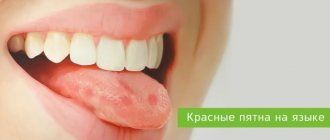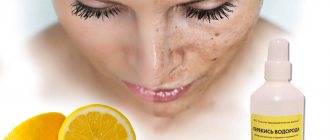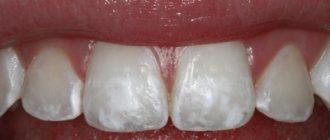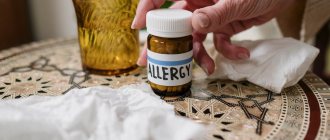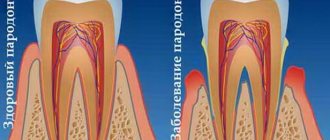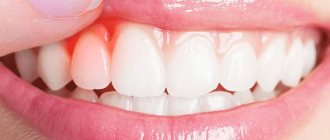December 5, 2020
Most infections are caused by streptococci and staphylococci. They live in the environment, inhabiting the skin, mucous membranes of the mouth, nose, and genitals. In 9–12% of cases, inflammation is provoked by corynebacteria, leprosy bacilli, tuberculosis, and campylobacter.
Healthy skin keeps germs out. This is prevented by the structure of the epidermis, the pH of sweat and sebum, and the antiseptic properties of the secretion of the sebaceous glands. When protection is violated, pustular rashes occur.
What it is
This term suggests a symptom complex of secondary rashes. They appear after various forms of skin inflammation, pimples, and acne. Considering that its debut usually occurs in adolescence, the remaining traces pose a serious problem for youth and affect the psychological state of young people. If acne develops at an older age, the patient may also experience post-acne; treatment in this case is complicated by the general condition of the skin.
The consequences come in the following forms:
- hyperpigmentation;
- pathological scars;
- atheromas;
- milia (whiteheads).
Treatment and subsequent recovery of patients requires an integrated approach.
Medicines for bruises
Major injuries are accompanied by severe pain, which is difficult to relieve with local remedies. Therefore, soon after injury, you can take painkillers orally based on:
- nimesulide;
- diclofenac;
- indomethacin;
- ibuprofen;
- ketorolac.
They help relieve pain, reduce swelling and inflammation.
Sometimes hematomas appear due to increased fragility of blood vessels, so it is necessary to use agents to strengthen the capillaries against them. Riboxin and complexes containing vitamin C and ascorutin help with this.
It is difficult to remove blueness under the eyes that is not associated with injury. It appears due to kidney pathologies or due to the proximity of blood vessels under the skin. In this case, it is necessary to eliminate the cause, apply cooling compresses before bed or apply special patches.
Reasons for appearance
Human skin has a complex structure; in addition to the cells themselves, it contains hair follicles, sweat and sebaceous glands. If the functioning of the latter is disrupted, their ducts narrow, making it difficult for secretions to reach the surface. It accumulates inside the gland, creating ideal conditions for the proliferation of bacteria and the formation of inflammation.
Over time, swelling occurs in the area of the pimple, and collagen begins to be actively produced in this area. This means that denser tissue is formed, so patients’ requests often sound like this: “How to remove post-acne scars on the face?” The capillary network also grows and the work of pigment cells is stimulated. Darker stains are formed that are more durable.
Also factors that provoke the negative consequences of acne are:
- long-term fight against inflammation;
- unprofessional acne removal;
- the presence of nodules or cysts on the skin.
Persistent acne
Post-acne may be a consequence of this phenomenon, which cannot be dealt with for a long time. As a rule, to solve this problem it is recommended to do a hormone test.
The fact is that the receptors of the sebaceous glands, which are directly involved in the process of acne formation, are sensitive to male hormones, androgens (they are produced in the body of both women and men). An increase in their production also leads to a decrease in the content of linoleic acid in sebaceous secretions, and subsequently to the reliability of the skin’s protective barrier.
Such situations, and therefore prolonged inflammation on the surface of the epidermis, can be provoked by the following factors:
- puberty;
- endocrine diseases;
- obesity;
- menopause;
- gastrointestinal diseases;
- taking medications;
- stress;
- chronic fatigue syndrome, etc.
Mechanical damage to the skin
In order not to solve the problem of how to quickly get rid of post-acne scars forever and remove neoplasms, during the period of exacerbation of acne, it is recommended to avoid rough influence. Squeezing pimples, as well as mechanical damage (often resulting from careless care), leads to the formation of scars and age spots in this area. This is especially dangerous for people with dark skin, and also if the patient’s age exceeds 35 years. The peculiarities of the functioning of the endocrine glands during this period often lead to the formation of scars after acne and acne.
Mechanical injury to the face can also result from inaccurately performed cleaning or deep peeling. These procedures are not recommended during an exacerbation period.
Areas of localization and how to remove post-acne spots
The place where scars appear can be not only the face, but also other areas of the body:
- neckline;
- back;
- neck.
Be that as it may, in most cases the marks are on open areas of the body, which worsens the psychological state of the patients. Improper treatment can lead to the skin retaining an uneven texture, and the places where there were inflamed acne will be clearly visible. That is why it is important for the doctor to give comprehensive recommendations on how to quickly cure and remove post-acne on the face, how to get rid of spots on other parts of the body, so that the patient’s quality of life does not decrease and the emotional background is normalized.
Superficial bacterial skin infections
Folliculitis
- inflammation of the hair follicle: abscess around the hair, redness of the surrounding area.
Pemphigus of newborns
- a severe contagious disease when inflammatory blisters cover the baby’s entire body, forming crusts and ulcers.
Impetigo
- against the background of redness, painless blisters with cloudy contents appear. Then the blisters shrink to yellowish crusts, leaving erosions.
Impetigo often occurs in children and young women. Localization: face, under the hair of the head, limbs. When staphylococcus attaches, the crusts become greenish or bloody. The disease spreads quickly in communities. If you suspect it, you need to isolate the child and bandage the wound.
Kinds
The consequences of acne are of several types:
- scars - at the site of the pimple, an area of dense tissue is formed, which is noticeably different from the surrounding skin and is characterized by a high content of collagen fibers;
- pigment spots - they form at the site of acne rashes and are noticeably different from the general tone;
- congestive erythema - a complication that occurs as a result of inflammation of small vessels, as well as subcutaneous fatty tissue and is accompanied by redness and thickening at the site of the former pimple;
- whiteheads, enlarged pores, etc.
To understand how to get rid of post-acne on the face and what removes it well, you need to establish which of the main types your problem belongs to. Only after this can you create an effective comprehensive treatment program.
We recommend
Curacen Essence (20 fl x 2 ml)
Nanoneedles with ultra-thin walls 30G
Nanoneedles with ultra-thin walls 33G
Curacen – for injection
Enlarged pores
The fact is that these are opening ducts of the sebaceous glands and the problem is directly related to acne. They expand due to hormonal imbalances, increased oily skin, poor diet, use of inappropriate cosmetics and other reasons. An additional factor that has recently been identified is the impact of free radicals, their content is increased in the atmosphere of large cities. In search of a way to exactly how and whether it is possible to cure post-acne on the face, you need to find out why the pores are enlarged.
Should we fight this problem? Certainly. They look unaesthetic, worsen the dermal relief, and in addition, they are an entry point for infections and are clogged with the secretion of the sebaceous glands. The processes of skin respiration and metabolism are disrupted.
To avoid enlarged pores and acne formation, you can undergo professional cleaning on time. This procedure stimulates their narrowing and normalizes the functioning of the sebaceous glands. With its help, you will stop thinking about how to get rid of post-acne spots and remove redness on your face with the help of a cosmetologist.
Stagnant traces
They are also called erythema. They arise as a result of capillary expansion. As a result, red areas form on the skin. In some cases, such phenomena go away on their own, especially if they arise as a response to mechanical stress, due to a reaction to intense sun or similar factors.
But most often, it is better to consult a specialist with such a problem, since usually the consequences of this kind are persistent and cannot be removed with home remedies.
Hyperpigmentation (brown spots)
Increased skin pigmentation usually occurs as a result of inflammation of papulopustular elements. Papules are inflamed small nodules with a diameter of 2-4 mm. Pustules are nodules with a cavity filled with pus formed inside them. A light-colored crust may form on their surface.
The formation of hyperpigmentation is usually promoted by active solar and mechanical exposure, for example, when trying to squeeze out pimples.
Whiteheads
The problem of how to effectively get rid of post-acne, how to cure the consequences of inflammation, is especially aggravated if the skin lesion takes the form of whiteheads (milia).
As a rule, they are localized in the following areas of the face:
- forehead;
- nose;
- cheeks;
- chin;
- around eyes.
Most often, milia appear during periods of hormonal changes, including adolescence, as well as during pregnancy. The second factor influencing the formation of whiteheads is increased fat content.
Ways to effectively remove post-acne scars, how to get rid of them in these situations, should include changing your diet, a competent approach to skin care, as well as monitoring hormonal levels and its timely correction.
Scarring
They can form where pimples once were. Studies have been conducted in which it was found that about 1% of people who have suffered from acne suffer from them. However, approximately one-seventh of scars are disfiguring in nature, which means they lead to serious psychological problems. This condition requires an individual approach and careful study of the quality of the skin around the scar. Also, the nature of treatment depends on the stage of maturity.
Methods of disposal
Advising on what works well to remove acne marks on the face, experts draw attention to the need for an integrated approach:
- diagnosis by a doctor, drawing up recommendations taking into account the individual characteristics of the patient’s skin;
- consultation with a cosmetologist who will recommend hardware and injection methods;
- regular use of home care products.
What can you do at home?
To get rid of stains, it is best to take the advice of experts who recommend home care products designed to resolve scars, such as Contractubex. The enzymes contained in these medications are designed to break down the dense collagen fibers that form scar tissue.
But home peels and self-exfoliation are unlikely to give the expected effect. They act at the level of the epidermis, and acne is a deep-seated change in the skin that affects the dermis. That is why it is recommended to consult a doctor for professional treatment of post-acne and prescribe the necessary products, which should be designed for deep care.
What treatment methods are used in cosmetology?
How to quickly remove acne, spots, scars and cysts? Patients often come to a cosmetologist with such a request. Experts most often recommend the following treatment options:
- Phototherapy. Exposing the affected areas to light of a certain length improves the condition of the skin. As a result, inflammation decreases and erythema disappears.
- Microdermabrasion. This is a delicate procedure, during which the cosmetologist removes the top layer of the epidermis and carefully polishes its surface. It is effective if home cosmetics do not allow you to choose a product that can remove post-acne.
- Laser resurfacing. It is not mechanical and is necessary to improve the relief due to the action of the light beam. The laser allows you to fine-tune the depth of exposure, but it is important to remember that for about 10 days after it, crusts and redness will remain on the face.
Laser scar removal: prices, before and after photos
Laser scar removal is carried out using a procedure called laser skin resurfacing. This method is suitable for mature scars whose size has stabilized and is no longer increasing. Laser resurfacing works well not only with hypertrophic and keloid scars (for example, a cesarean scar can be almost completely removed with a laser), but also with shallow atrophic scars after acne.
Laser scar removal: before and after photos
What lasers can be used:
- Fully ablative lasers – fully ablative “carbon dioxide CO2 laser” and “erbium Er:YAG laser” – can improve the condition of hypertrophic and keloid scars by 50-81% after just 1 procedure.
However, this type of laser is quite traumatic, and re-epithelialization of the laser-treated skin flap will last 7-10 days (for CO2 laser) and 4-7 days (for Er:YAG). Er:YAG laser is less traumatic for tissue, but requires more procedures to achieve a similar effect - compared to a CO2 laser. We do not recommend the use of these types of lasers - not only because of the long rehabilitation period, as well as a large number of side effects, but also because of the fairly high percentage of relapses of hypertrophic and keloid scars.
- Fractional ablative lasers - when using conventional ablative lasers, which we described above - absolutely the entire surface of the skin flap is subject to thermal damage. But ablative fractional CO2 or Er:YAG lasers act on the skin fractionally (i.e., between micro-areas of thermal damage there will be areas of undamaged skin). This can significantly reduce the rehabilitation period and reduce the risk of side effects. Many patients note that fractional ablative lasers allow them to achieve a more aesthetic appearance of the scar - compared to completely ablative lasers.
- Pulsed dye lasers (PDLs) – they are non-ablative lasers, i.e.
they leave the surface of the skin intact, and all areas of thermal damage occur in the deep layers. For the treatment of hypertrophic and keloid scars, ILCs with a wavelength from 585 to 595 nm are used, for example, the VBeam Perfecta laser. These lasers greatly reduce the vascularization of scars (the number of blood capillaries), which determines their bright red/purple color. They also significantly reduce the height and thickness of hypertrophic and keloid scars. For example, in the authoritative scientific journal “Dermatologic Surgery” in 2016, clinical studies were published that showed that the severity of hypertrophic scars after 1-2 sessions of ILC decreased immediately by 57–83%. It should also be noted that the risk of relapse after ILC was the smallest - in comparison with all other types of lasers. In our opinion, ILCs are the optimal choice for the correction of hypertrophic scars and keloids, however, in this case, a larger number of procedures may be required.
Laser scar removal (ICL, fractional ablative) –
Laser scar removal: prices Cost varies depending on the area where the scar is located, as well as its size. Therefore, to remove scars with a laser, the cost per 1 cm2 will average about 1,800 rubles (the upper price limit is up to 3,000 rubles).
Possible side effects after the procedure -
- pain, burning (disappears within 12-72 hours),
- swelling (disappears within 48 hours),
- bleeding (disappears within 12 hours),
- formation of crusts, peeling (within 5-7 days),
- complete healing after laser scar removal – 10-21 days,
- risk of pigmentation,
- risk of infection,
- risk of scar re-formation.
How to quickly lighten or conceal
This is only possible if you use an effective integrated approach. That is, here it is necessary to combine competent home care and post-acne treatment from a cosmetologist, and you also need to take the necessary preventive measures.
Cosmetic and therapeutic products provide noticeable positive results, including:
- retinol;
- soft acids;
- keratolytics;
- natural ingredients, including badyagu and arnica.
However, they must be used with caution. Skin with acne scars is sensitive and needs delicate and competent care; active components of cosmetics can only aggravate the situation. In particular, it is important to remember that retinol is UV sensitive and should not be used if you plan to go out in the sun. That is why it is not recommended to get rid of this problem on your own, but should be done under the supervision and control of a doctor.
Doctor's consultation: when is it necessary?
It is recommended to see a doctor, even if the wound does not seem serious. In addition, there are a number of cases when you cannot do without the help of a specialist. Such cases include:
- continued bleeding from the wound - it may be necessary to stop it by ligating the vessel, applying a suture, or using a hemostatic sponge;
- foreign bodies remaining in the wound, contamination;
- wounds caused by heavily contaminated, rusty, painted, grease-coated objects;
- wounds with signs of inflammation;
- wounds caused by animals;
- suspicion of a fracture, dislocation, ligament rupture.
In addition, it is not recommended to try to use certain medications on your own. The doctor prescribes an ointment for wound epithelization.
Can spots go away on their own?
How to quickly remove acne marks, and can they disappear without any help? This question is asked by many patients who are encountering this problem for the first time. It is important to remember that scarring and pigment formations on the skin cannot be ignored; it is imperative to undergo treatment. They do not go away on their own, and without the necessary therapy the situation can only get worse. Therefore, we recommend that you come for a consultation with a dermatologist and, if necessary, undergo an examination.
We recommend
Curacen Essence (20 fl x 2 ml)
Nanoneedles with ultra-thin walls 30G
Nanoneedles with ultra-thin walls 33G
Curacen – for injection
Surgical treatment of scars –
Surgical treatment of scars involves excision of scar tissue and creation of a cosmetic suture. There are various methods of tissue suturing (for example, intradermal), which make it possible to ensure that the seam will be practically invisible in the future. For cosmetic stitches, very thin suture material is used.
How to cure with the drug Curasen
When looking for an option on how to effectively remove post-acne on the face, placental therapy comes first. In particular, dermatologists recommend using the drug CURACEN. Due to the fact that it is made on the basis of human placenta hydrolyzate, it has the following effects:
- deep hydration and nutrition of the skin from the inside, prevention of inflammatory processes;
- increasing elasticity and firmness;
- compaction and alignment, creation of an internal cellular framework;
- smoothing out fine, moderate and deep wrinkles;
- elimination of hyperpigmentation, as well as reducing the severity of dark circles in the lower eyelid area;
- tightening in conditions of gravitational ptosis of soft tissues;
- stimulation of the body’s own synthesis of new cells, as well as acceleration of metabolism;
- assistance in restoring the dermis after aggressive cosmetic procedures or plastic surgery.
How to prevent acne
To remove acne and red post-acne, remove traces, treatments in cosmetology and therapy turn out to be very effective. However, in many cases it is easier to prevent the formation of acne and subsequent complications:
- balance your diet, exclude fatty foods, limit your consumption of sugar, tonic drinks, and canned foods;
- use cosmetics suitable for your skin type;
- do not overuse makeup;
- do not squeeze pimples;
- consult a dermatologist.

